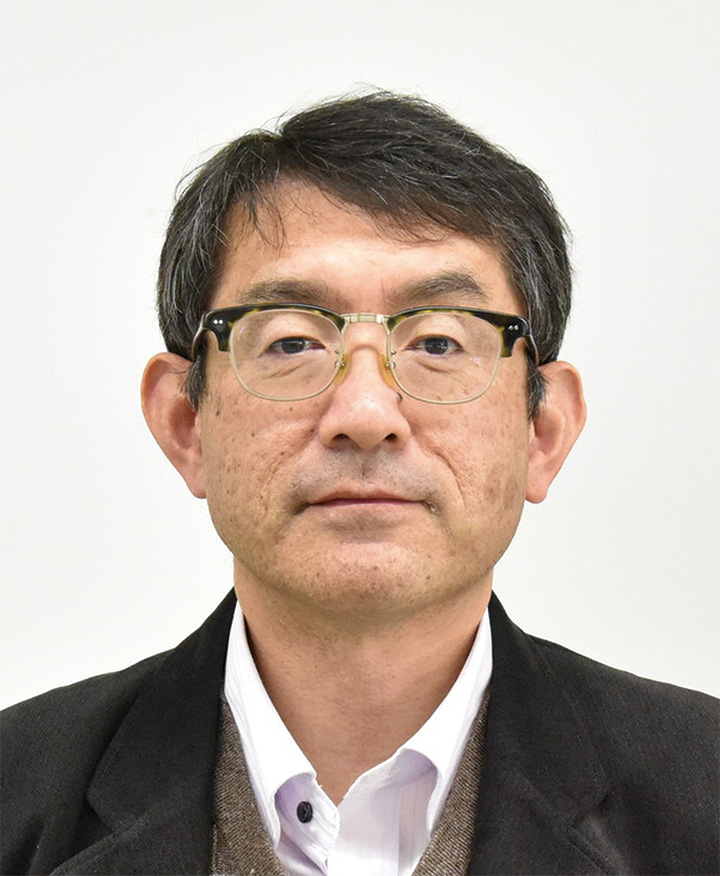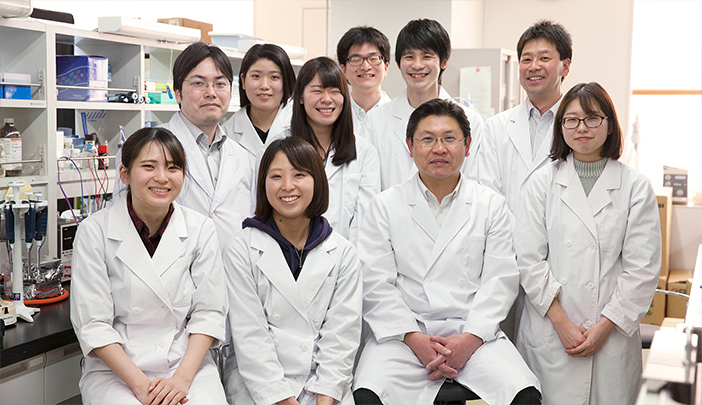 Researchers
Researchers
- HOME
- English
- Researchers
- MATSUMURA Hisao, Ph.D. / Associate Professor
MATSUMURA Hisao, Ph.D. / Associate Professor
The Center for Clinical Pharmacology and Pharmaceutics
Department of Pharmaceutical Sciences

Research Topics
1. Suspension method using Supersonic wave.
2. Suspension method using a planetary centrifugal mixer.
Research in our group is to develop a novel method of tube administration to replace the pulverization and simple suspension methods. because, as for the pulverization method, there was a problem of the loss of drug due to adhesion to instruments, feeding tube obstruction, the health damage which various medicines exposure to pharmacists. The simple suspension method is a convenient method in clinical site; however, it has the several problems associated with controlling water temperature and a slow disintegration.
1. Suspension method using Supersonic wave.
In this study, we attempted the establishment of the improved simple suspension method using supersonic wave vibration. In the conventional simple suspension method, VOLTAREN® Tablets 25 mg and LOXONIN TABLETS® 60 mg needed to crush before disintegration for its hard surface. In this study, these tablets were completely disintegrated within 10 min by the improved simple suspension method using supersonic wave vibration (42 kHz; 26 W). Moreover, these disintegrated preparations were passed through 8Fr. feeding tube. These data suggest that this new method enables the avoidance of tube obstruction and slow disintegration of tablet, leading to a more convenient medication. In conclusion, we consider the improved simple suspension method using supersonic wave vibration is applicable to clinical site.
2. Suspension method using a planetary centrifugal mixer.
A tabletop automatic ointment dispensing and formulation machine (rotation/revolution mixer) was applied to suspend internal solid preparations (rotation/revolution suspension method). Tablets were placed in 20 mL of water at 24 ± 1°C and suspended by rotation and revolution. Then, internal solid preparations were mostly disintegrated and suspended, and passed through a feeding tube within 5 minutes, although the capsule did not pass through. The base component of Mevalotin® Tablet 10 was quantified because of a concern about the effects of rotation/revolution suspension on drug stability. As a result, the content of the base component, pravastatin sodium, was not significantly reduced. Thus, the rotation/revolution suspension method allows tablets to be disintegrated and suspended, and passed through a feeding tube even in water at 24 ± 1°C.
Representative Publications
1. Matsumura H, Iida M, Suzuki T, Hatsugai K, Ogasawara K, Yoshida K, Kurita T, Fujikake Y, Nakajima T, Matsuda Y.; A suspension method using a planetary centrifugal mixer for oral administration of tablets or capsules by a feeding tube, The journal of community pharmacy and pharmaceutical sciences, 12, 1-7 (2020).
2. Matsumura H, Iida M, Watanabe K, Murahashi T, Fujikake Y, Study on disintegration suspension and drug stability of Bakutar®granules by ultrasonic suspension Method, The annual report of Nihon Pharmaceutical University, 5, 56-62 (2019).
3. Matsumura H, Iida M, Kaku T, Saitou H, Murahashi T, Comparative study of tube administration methods for internal solid preparations, The annual report of Nihon Pharmaceutical University, 3, 17-20 (2017).
4. Matsumura H, Morimoto K, Uesaka M, Tanabe R, Iida M, Saitou H, Nakajima T, Matsuda Y, Development of new method using supersonic wave into the administration of tablets or capsules by tube, J Jpn Soc Hosp Pharm, 51, 1249-1253 (2015).
5. Matsumura H, Hara A, Hashizume H, Maruyama K, Abiko Y, Protective effects of ranolazine, a novel anti-ischemic drug, on the hydrogen peroxide-induced derangements in isolated, perfused rat: comparison with dichloroacetate, Jpn J Pharmacol, 77, 31-39 (1998).

 JP
JP ACCESS
ACCESS SNS
SNS



 受験生の方へ
受験生の方へ 在学生の方へ
在学生の方へ 資料請求
資料請求 SNS
SNS ENGLISH
ENGLISH LMS
LMS 交通アクセス
交通アクセス 採用情報
採用情報
 お問い合わせ
お問い合わせ